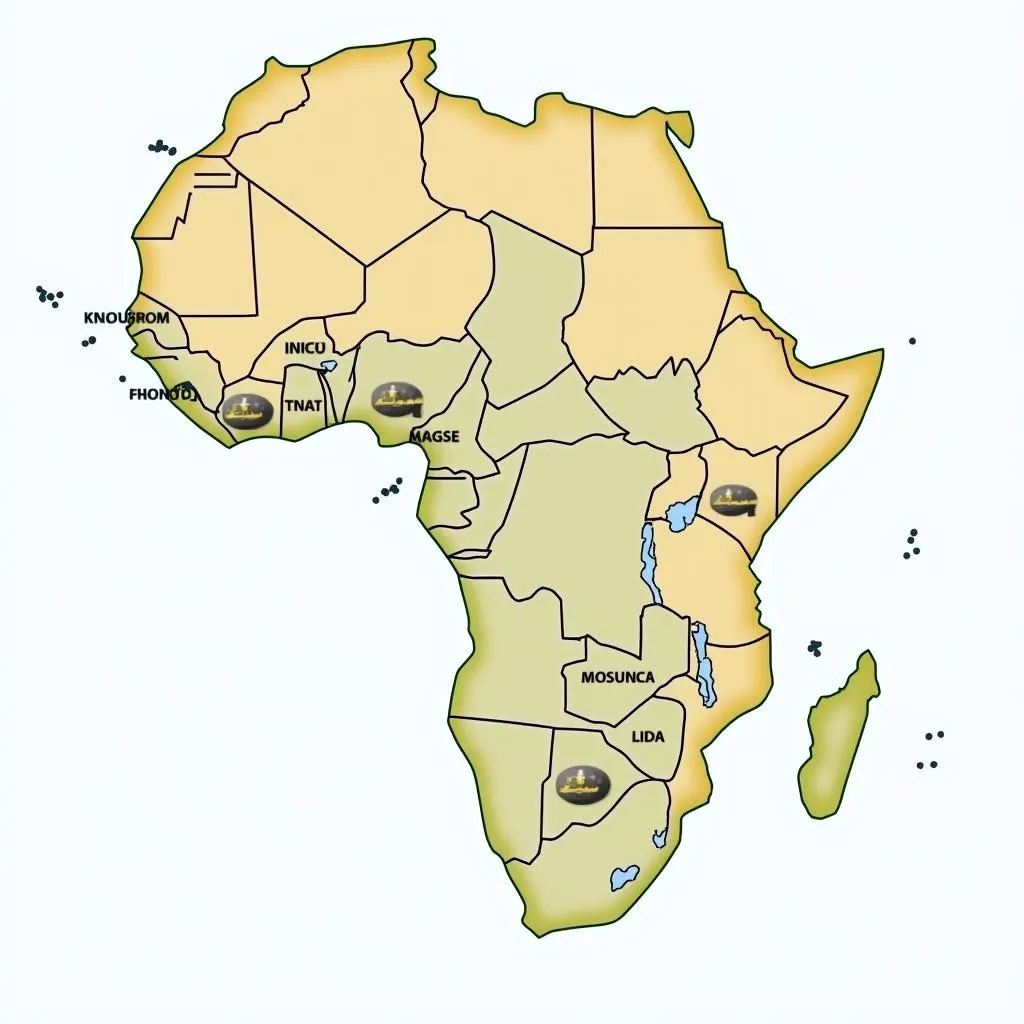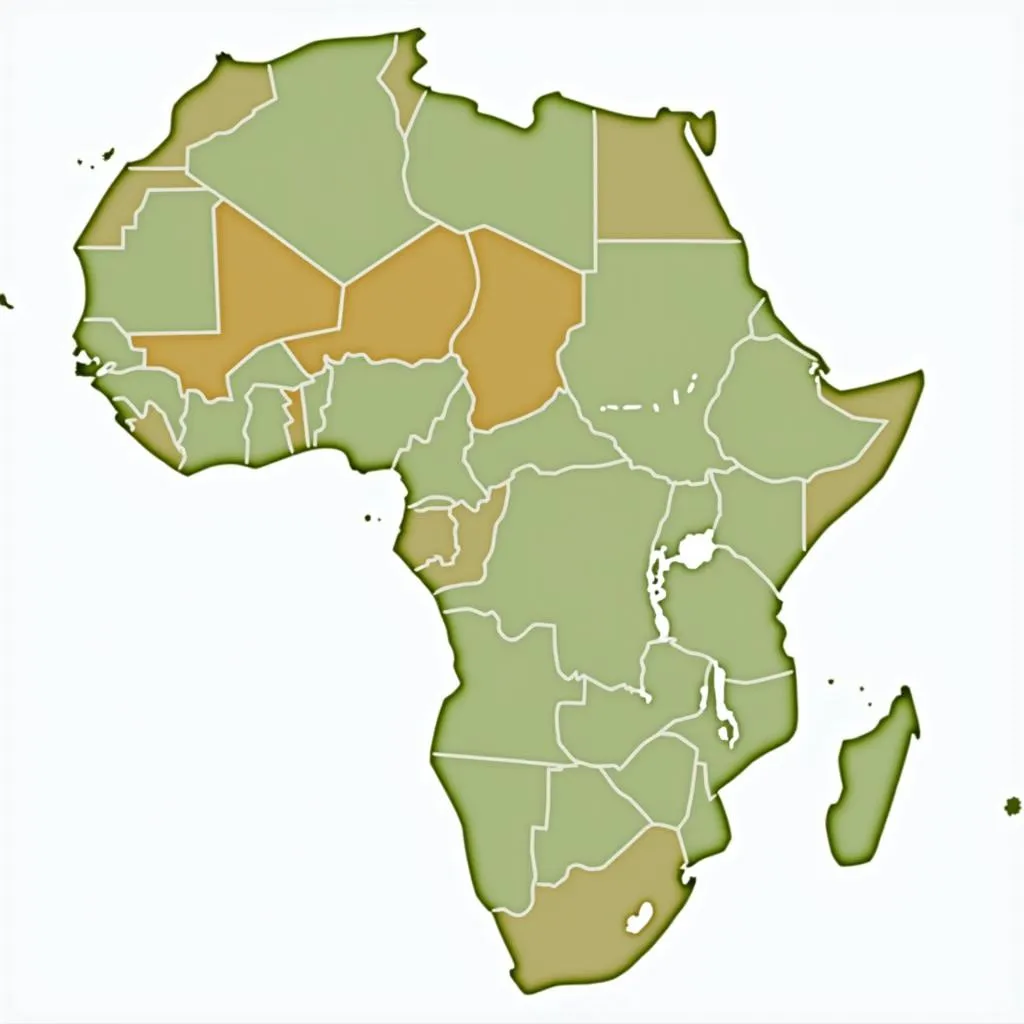The African Economic Community: Regional Organizations Driving Africa’s Economic Integration
The African Economic Community (AEC) is a visionary project aimed at fostering economic integration and cooperation among African nations. Established in 1991, the AEC envisions a united Africa, where goods, services, and people move freely across borders, promoting economic prosperity and shared development. To achieve this ambitious goal, the AEC has established several regional organizations that play a crucial role in driving economic integration and fostering sustainable development.
Regional Organizations: The Pillars of African Integration
The African continent is diverse, with a wide range of cultures, languages, and economic systems. Recognizing this diversity, the AEC has adopted a regional approach to economic integration, fostering collaboration through a network of regional economic communities (RECs). These RECs act as building blocks, working towards the overarching goal of the AEC. Here are some of the key RECs contributing to Africa’s economic transformation:
1. The East African Community (EAC)
The EAC comprises Burundi, Kenya, Rwanda, South Sudan, Tanzania, and Uganda. Established in 1967, the EAC focuses on promoting free trade, harmonizing policies, and fostering regional cooperation in areas like infrastructure, education, and health. The EAC has significantly reduced tariffs among its members, facilitating cross-border trade and stimulating economic growth.
“The EAC has been instrumental in fostering regional integration, creating a unified market, and opening up opportunities for economic cooperation among its members,” says Dr. Sarah Mwakalinga, an expert in regional economic integration at the University of Dar es Salaam.
2. The Southern African Development Community (SADC)
SADC is a regional organization comprising 16 member states in Southern Africa. Founded in 1980, its focus is on promoting regional cooperation in areas such as trade, infrastructure, and industrial development. The SADC has implemented various initiatives to reduce trade barriers and facilitate the movement of goods and services within the region, contributing to economic growth and poverty reduction.
3. The Economic Community of West African States (ECOWAS)
ECOWAS is a regional bloc comprising 15 West African countries. Established in 1975, ECOWAS aims to promote economic integration, improve living standards, and maintain peace and security in the region. The ECOWAS has made significant strides in reducing trade barriers and establishing a single currency, the Eco, which is expected to further enhance regional trade and economic integration.
4. The Common Market for Eastern and Southern Africa (COMESA)
COMESA is a regional organization established in 1994, encompassing 21 member states in Eastern and Southern Africa. The organization prioritizes regional trade, investment, and infrastructure development. COMESA has implemented free trade agreements, reducing tariffs and simplifying customs procedures to enhance trade flows and facilitate economic growth within the region.
5. The Arab Maghreb Union (UMA)
The UMA is a regional organization comprising five North African countries: Algeria, Libya, Mauritania, Morocco, and Tunisia. Established in 1989, the UMA focuses on promoting economic and social cooperation, fostering closer economic ties, and strengthening cultural exchange among member states.
6. The Central African Economic and Monetary Community (CEMAC)
CEMAC comprises six Central African countries: Cameroon, Central African Republic, Chad, Congo, Equatorial Guinea, and Gabon. Established in 1994, CEMAC aims to promote economic integration, harmonize macroeconomic policies, and establish a single currency, the CFA franc.
The Impact of Regional Organizations on Africa’s Development
These regional organizations have played a pivotal role in driving Africa’s economic development and integration. They have:
- Reduced trade barriers: Through free trade agreements and other initiatives, RECs have lowered tariffs and simplified customs procedures, facilitating trade and investment across borders.
- Enhanced infrastructure: RECs have collaborated on infrastructure projects, improving transportation, communication, and energy networks, facilitating economic activities and connecting people across the continent.
- Promoted industrial development: Regional organizations have supported industrial development by promoting investment in manufacturing, agro-processing, and other sectors, creating jobs and fostering economic growth.
- Strengthened regional governance: RECs have established mechanisms for regional cooperation and policy coordination, facilitating a more coordinated and unified approach to regional challenges and opportunities.
- Fostered regional peace and security: By promoting dialogue and collaboration, regional organizations have contributed to a more peaceful and stable environment, essential for economic development and prosperity.
Challenges and Opportunities for Regional Integration
While regional organizations have achieved notable success in advancing African integration, they face several challenges, including:
- Political instability: Political instability in some member states can hinder progress towards regional integration.
- Lack of infrastructure: Inadequate infrastructure, such as roads, railways, and energy grids, can limit trade and investment.
- Trade barriers: Non-tariff barriers, such as complex customs procedures and bureaucratic bottlenecks, can still impede trade flows.
- Lack of financing: Insufficient financial resources can limit RECs’ ability to implement projects and achieve their goals.
Despite these challenges, the future of regional integration in Africa remains bright. The African Continental Free Trade Area (AfCFTA), a landmark agreement aiming to create a single market for goods and services across the continent, holds immense potential for boosting trade, investment, and economic growth.
The AfCFTA: A Game Changer for Africa’s Economic Future
The AfCFTA, launched in 2020, is expected to transform Africa’s economic landscape. By removing trade barriers and facilitating free movement of goods, services, and people, the AfCFTA has the potential to:
- Boost intra-African trade: The AfCFTA aims to increase intra-African trade from the current 16% to 52% by 2030, unlocking immense potential for growth and development.
- Attract foreign investment: The AfCFTA is expected to attract significant foreign investment into Africa, creating new business opportunities and promoting economic diversification.
- Create jobs and improve living standards: The AfCFTA is projected to create millions of new jobs, boost economic growth, and improve living standards for millions of Africans.
Conclusion: A Path to a Brighter Future for Africa
The African Economic Community and its regional organizations are instrumental in driving economic integration and promoting sustainable development on the continent. By fostering collaboration, reducing trade barriers, and promoting regional peace and security, these organizations are laying the foundation for a more prosperous and integrated Africa. The AfCFTA represents a significant step towards achieving the AEC’s vision of a united and prosperous Africa. As Africa continues to forge its own path towards economic progress, regional organizations will play a vital role in shaping the continent’s future, unlocking its vast potential, and building a brighter future for all Africans.
 Regional Integration in Africa: A Journey Towards Unity and Prosperity
Regional Integration in Africa: A Journey Towards Unity and Prosperity
FAQ
- What are the main goals of the African Economic Community?
The African Economic Community (AEC) aims to promote economic integration and cooperation among African nations, leading to a united Africa with free movement of goods, services, and people. - How many regional economic communities are there in Africa?
There are eight recognized regional economic communities in Africa, each focusing on different aspects of economic integration and cooperation. - What are the benefits of regional integration for Africa?
Regional integration can lead to reduced trade barriers, improved infrastructure, increased industrial development, stronger regional governance, and a more peaceful and secure environment, fostering economic growth and improving living standards. - What are some challenges facing regional integration in Africa?
Challenges include political instability, inadequate infrastructure, trade barriers, lack of financing, and the need for enhanced policy coordination and collaboration. - What is the significance of the African Continental Free Trade Area (AfCFTA)?
The AfCFTA is a landmark agreement aiming to create a single market for goods and services across the continent, expected to boost trade, investment, and economic growth, and create millions of new jobs.
 African Economic Community: A Map of Integration
African Economic Community: A Map of Integration
This website provides information on the African Economic Community and its various regional organizations. For assistance or inquiries, please contact us at:
Phone: +255768904061
Email: [email protected]
Address: Mbarali DC Mawindi, Kangaga, Tanzania.
We have a 24/7 customer service team available to assist you.



